Given the time consuming nature of scanning, I’m going to take this opportunity to return to the blog and look at the work of the second German photographer – after Joachim Brohm – in my Easy Rider series. The photography of Peter Bialobrzeski (born 1961).
I first met Bialobrzeski in 2003 when I was a student on the World Press Photo Joop Swart Masterclass in Amsterdam. He was one of the Masters, along with François Hebel, MaryAnne Golon, Roberto Koch, Manoocher, Nicole Robbers and Tom Stoddart. Looking back over my career over the past ten years I’d say that the Masterclass rates as one of the most significant waypoints in my professional life. It was a hugely valuable experience and, slightly ironically, precipitated my move away from editorial photography. The advice I gleened from the Masters, particularly from Bialobrzeski, was one of the motivating factors for upping sticks and spending a year traveling across Russia working on Motherland. I found an affinity with Bialobrzeski’s work and his approach, which seemed considered, intelligent and contemplative. Not to mention, beautiful.
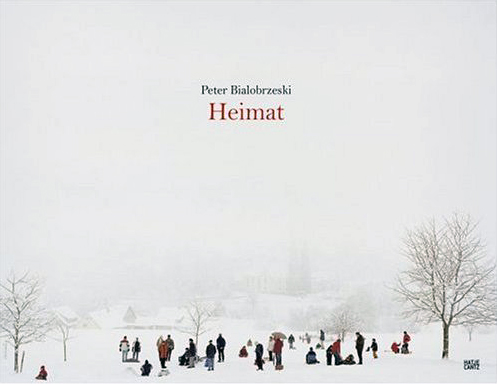
Bialobrzeski came to prominence with his 2004 book Neon Tigers (which was chosen as one of the Best-Designed German Books of that year and won several prizes including a World Press Photo). However, the work that I am most drawn to is his book on Germany. Heimat (published by Hatje Cantz) which is German for “homeland,” is the fascinating result of his journey over two years, covering nearly 9500 miles around the country.
As with Russians relationship with the concept of Rodina, for Germans Heimat is a rather difficult term which embodies conflicting tendencies. In Bialobrzeski’s own words, “Having a home means having roots, which is not the same as being rooted to the spot.” And since he is more interested in images than in places, Heimat is “not a book about Germany as homeland per se.” Rather, it creates a fixed image of “a personalized bit of visual and cultural history.” He talks about home not being a geographical marker, “it’s not about places, it’s about pictures†he says.
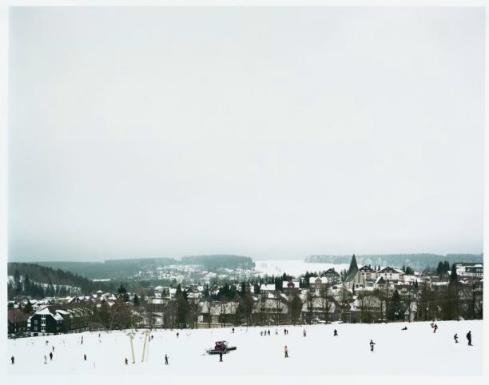
Heimat 08 © Peter Bialobrzeski
Bialobrzeski terms his photographs in Heimat as “projection surfaces for post-postmodernist man’s yearning for nature.†In his preface to the book he pays homage to German Romanticism, in particular the paintings of Caspar David Friedrich (who he identifies as influencing his notions of the ‘German Landscape’) and at the same time makes a nod to the work of contemporary American colour photographers, particularly Joel Sternfeld and American Prospects.
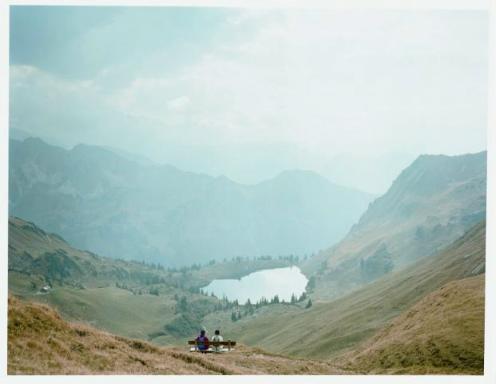
Heimat 20 © Peter Bialobrzeski
The link with Romanticism is clearly evident in these photographs, which Bialobrzeski himself identifies as- “although superficially documentary, with a sort of critical look, the pictures are nonetheless ‘beautiful’ as aesthetic statements.†While they are photographs of ordinary landscapes, unspectacular rural places that have been altered by man and through Bialobrzeski’s lens, are always peopled, they are definitely beautiful, while not slipping into romantic clichés.
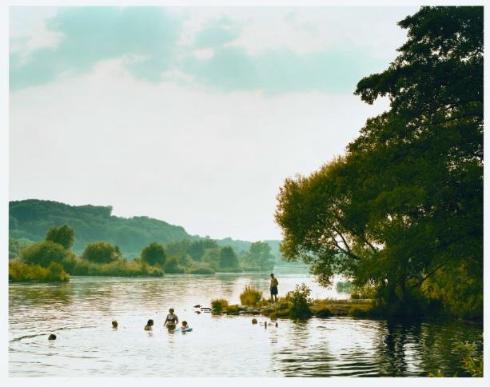
Heimat 25 © Peter Bialobrzeski
In an introduction to the book, Ariel Hauptmeier writes “Bialobrzeski wanted to circumnavigate the dogma that art has to be critical, detached, and unemotional. Wanted to set off in the confidence of finding things beautiful that you’re not allowed to find beautiful: ordinary, splendid, uneventful, magical, prosaic German landscapes. Such as everyone knows and loves, such as we have anchored in our collective unconscious. It would have been easy to have photographed these scenes in a cool, fragmented, or even ugly manner. But Peter Bialobrzeski made the effort to find them beautiful.â€
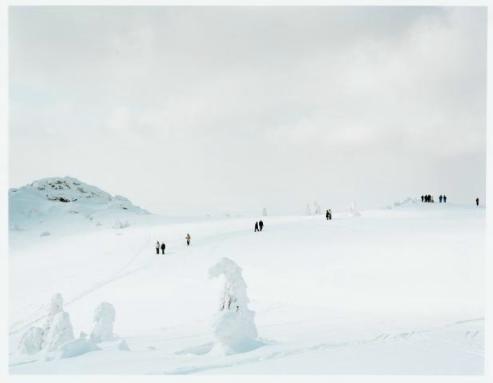
Heimat 15 © Peter Bialobrzeski
The link with German Romanticism and Bialobrzeski’s photographs is extended by Ariel Hauptmeier, who makes sees Bialobrzeski’s last photograph in the book (Heimat 34), that of a young woman sitting alone by the sea, as a pastiche of Caspar David Friedrich’s Monk by the Sea.
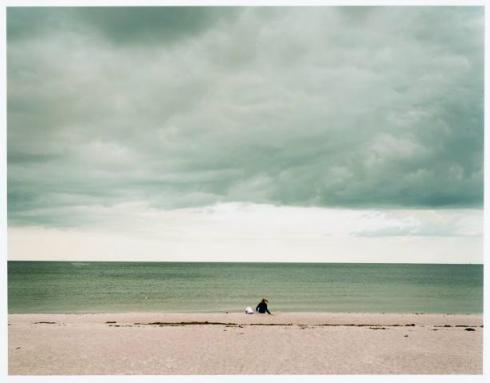
Heimat 34 © Peter Bialobrzeski
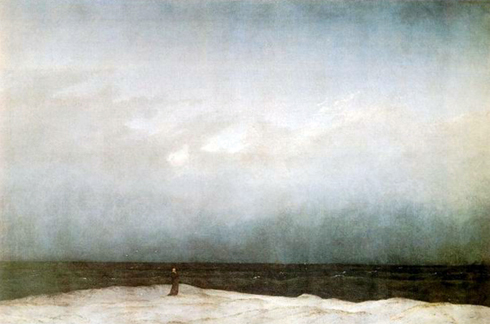
Caspar David Friederich, Monk by the Sea (1809), Oil on canvas
Heimat is my favourite photography book of the past couple of years. It’s well worth spending time with. And you can see more of Bialobrzeski’s photographs from the series on L.A.Galerie’s website here.
In a recent conversation where I brought up my We English project, Bialobrzeski told me that he’d actually spent a year in Britain documenting the country between 1991-1992 for a project called ‘Give My Regards to Elizabeth’. The work was shown at Side Gallery in 1993, however, it was never published as a book. I’ve posted up a couple of pictures below, and you can see a larger selection of images here (it’s interesting to see how Bialobrzeski’s pictorial approach has shifted since these were taken).
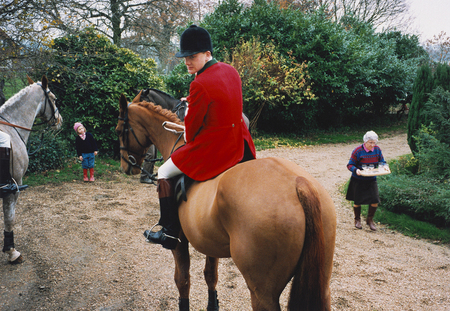
© Peter Bialobrzeski
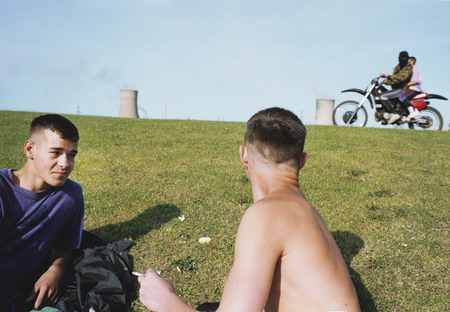
© Peter Bialobrzeski
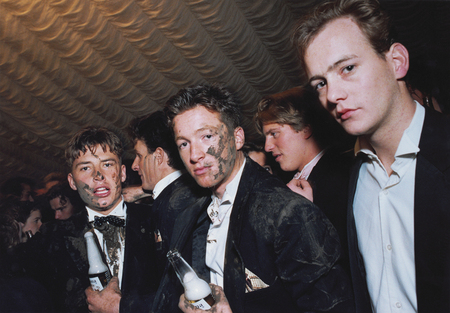
© Peter Bialobrzeski
If you want to find out more about Bialobrzeski’s work, you can read a recent interview with him over on Conscientious here.
Posted in EASY RIDER, HOMELAND, INSPIRATION | 1 Comment »
I was fascinated to find out more about Max Kandhola’s body of work ‘Trilogy’ which I touched upon in my last post. Having been in touch with Max, he’s kindly sent me an introduction to the series, which I’ve quoted below alongside some photographs from Flatland (the second part of the trilogy).
“Since the mid nineties I have embarked upon a personal odyssey in mapping my family heritage, Sikh Punjabis, dealing with my life and journey, a social and political mapping of living in England since my parents arrived in the 1950’s. Identity and the notion of home is still firmly imbedded in the motherland for the diasporic Punjabi.”
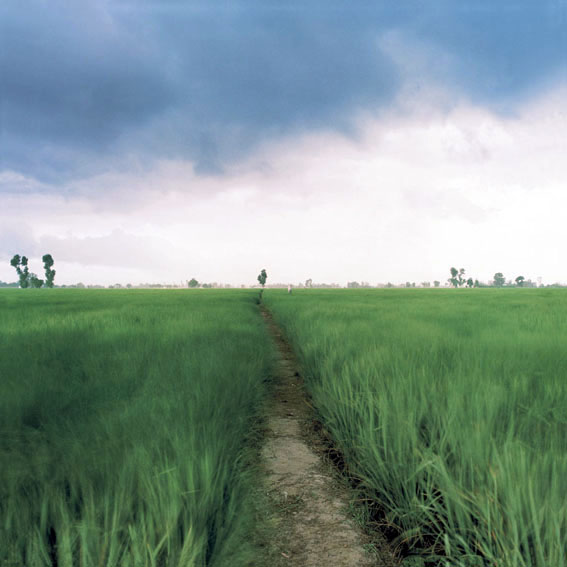
Kapurthala District travelling between Phagwara and Phillaur Jalandhar District © Max Kandhola, 2004
“Rite of passage, rituals, belief, cast and mysticism, have played and performed their role within the psyche of first generation Punjabis in England. This influence and persuasion can be suffocating, misplaced and at times divisive leading to insecurity. My family are successful in all forms of business, lawyers, accountants, doctors, property developers and the infamous corner shop. Second and third generation Punjabis are looking beyond the veil of scepticism and guilt and beginning to challenge preconceived ideologies and perception about identity, what Indian or Punjabi is in the 21st century living in England.”
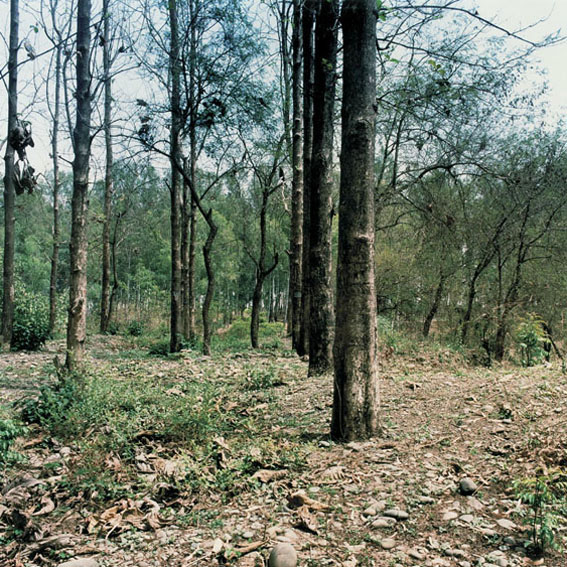
Gurdaspur District between Pathankot and Kathua (Jammu & Kashmir State) off the Jammu Road © Max Kandhola, 2006
“My life is in England, my mother, father and brother have been cremated and have had there ashes placed within running water within the lakes and rivers of this country. What is it to be a Punjabi in England. I speak Punjabi; understand the language. My mannerisms are English, yet when I speak Punjabi, the movement of my arms and head tend to elaborate and mimic the rhythmic tone and vocabulary of the forms and sounds generated by the Punjabi vocal chord. It’s quite beautiful and liberating.”
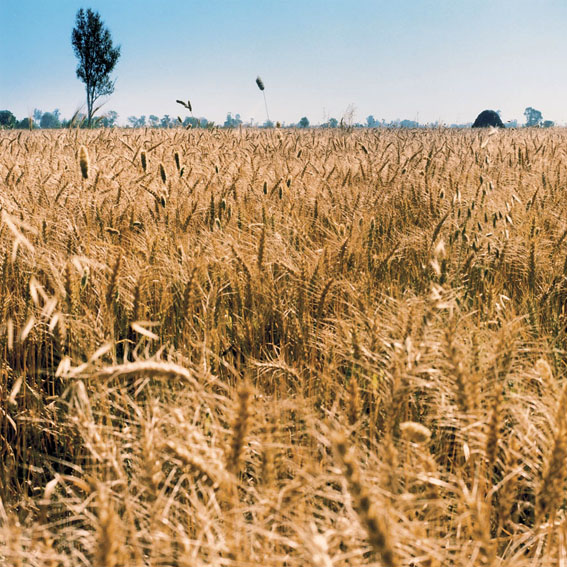
Jalandhar District near Village Saidhowal © Max Kandhola, 2006
“My personal insight and journey is through photography, which adds to the various chapters of contemporary art and literature, unfolding new narrative in placing diasporic Punjabis within a context of further critical discussion. My story is about home, England, my parents, death and dying, the Punjab and diaspora, homeland a new beginning, second and third generation Punjabis, and identities in England. Using archive material, random snapshots and new commissioned and personal work, I will be bearing witness to a family saga, spanning over several generations in discussing ancestral narratives.”
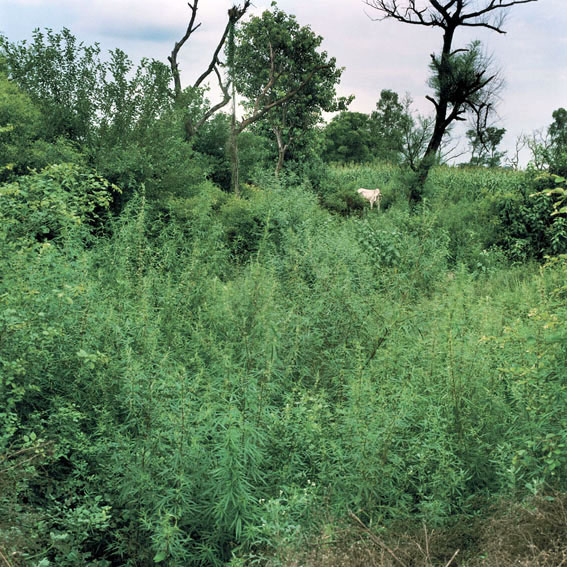
Fatehgarh Sahib District between Humayunpur and Sarai Banjara on route to Rajpura in Patiala District © Max Kandhola, 2004
“Illustration of Life (Dewi Lewis Publishing and Light Work New York 2003) is the first part of a trilogy, which began in 1996, in documenting his father’s struggle with cancer, and his last moments in life, which also explored issues within Sikh ritual, immortality and death. In the final pages of that book are three photographs of Kandhola’s father’s ashes. In Punjabi tradition the ashes are scattered in running water, a physical link re-introducing the body back into the land. Using this as metaphor Kandhola used death as a reference in his exploration of the Punjab land as resurrection of the body, in Flatland A Landscape of Punjab (Dewi Lewis Publishing 2007), which forms the second part of the trilogy.”
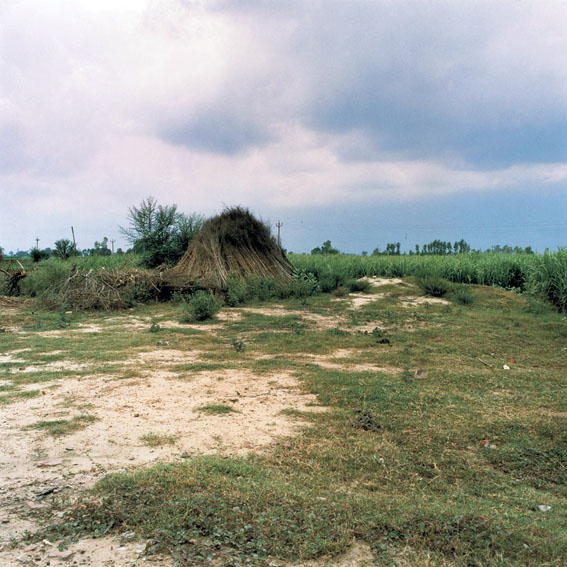
Kapurthala District near Khera Majja © Max Kandhola, 2004
“In Flatland A Landscape of Punjab, Kandhola documented the Punjab landscape, researched over a period of four years (2003-2007). Using the backdrop of cities and uncharted villages he has used the location of the rivers and the surrounding landscape as a metaphor in discussing aspects of Sikh Diaspora, the themes of memory and migration. The Photographs in Flatland constitute a photographic discourse of isolation and arcadia, the fantasy of mythological and scared places of cremation, a rugged terrain surrounded by meadows and pastoral land rather than the reality of urban city life. The photographs refer to the historical symbolism of land, and through the juxtaposition of iconographic references its association with Sikh Punjabi’s living in England.”
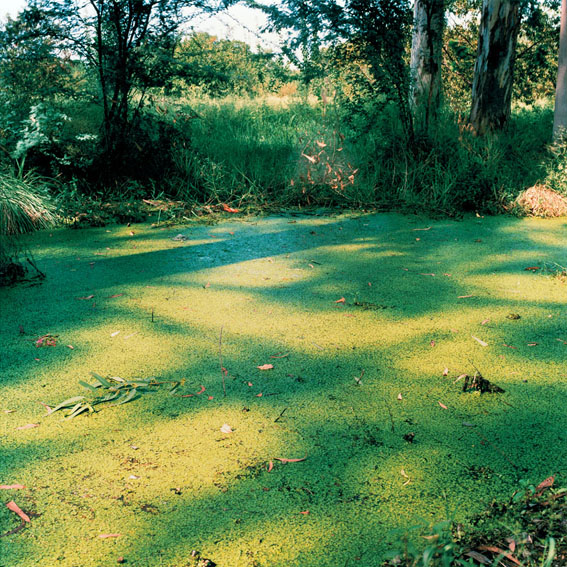
Patiala District near Rajpura © Max Kandhola, 2004
“In the final part of the trilogy, Roti Kapra aur Makhan, (Food Cloths and shelter), which Kandhola is currently researching, he will document the mundane and the vernacular, new family portraits and archive from the 1950s. The quote has been taken from a 1970’s bollywood film, and also within a social and political context referring to Indira Gandhi who used this verse to comment on the development and growth of the working people of India in 1970, and most recently by the late Benazir Bhutto for the PPP Pakistan People Party, that there will be bread, clothing and shelter for all.”
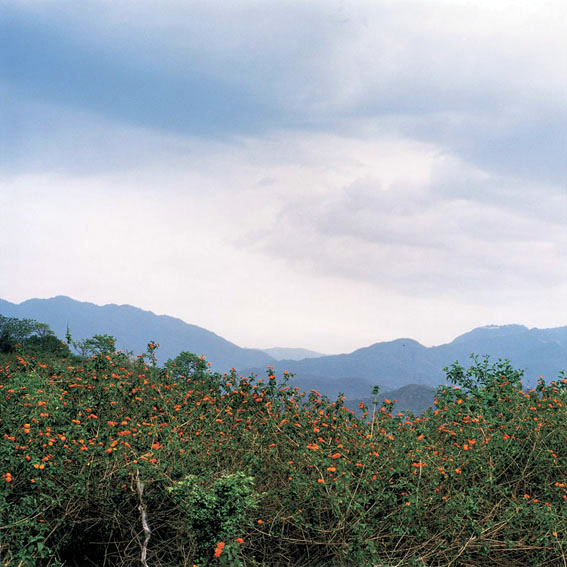
Travelling through Hoshiarpur District into Gurdaspur District over looking Himachal Pradesh © Max Kandhola, 2006
“Roti Kapra aur Makhan, the term is a metaphor for new beginnings, a cultural reference in discussing ancestral homes, ontology of the family through portraiture, and material culture. Mapping geographical roots and the topography of change from first to third generation Sikhs from Punjab. The narrative will present recognized and unfamiliar metaphors in discussing change and the mystical and mythological antidotes in referencing old and new ideologies of cultural change and extreme views and perceptions on life.”
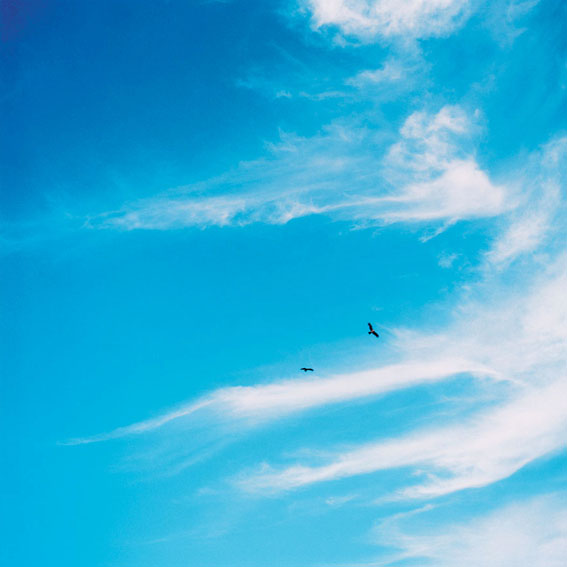
Morning sky over Firozpur and Rajasthan © Max Kandhola, 2005
Posted in HOMELAND | 4 Comments »
Another photographer whose work deals with questions about identity and memory, mapping ancestral narratives through history and heritage is that of Max Kandhola.
Born and raised in Birmingham, Kandhola is a fine art photographer and Course Leader of Photographic Studies at Nottingham Trent University. His most recent book is Flatland: A Landscape of Punjab 2003-2006, published by Dewi Lewis in September 2007-
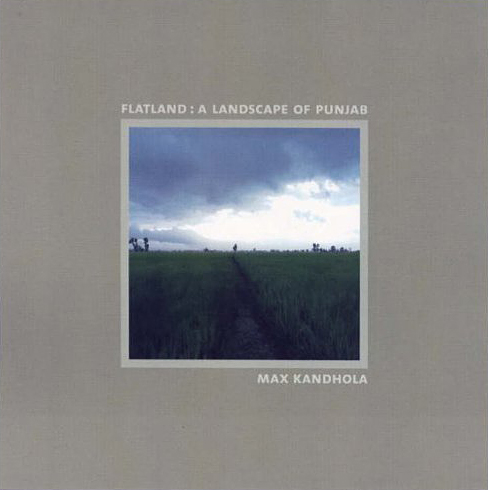
Following the death of his father, Kandhola returned to his birthplace in the region of Punjab, the region nestled between India, Pakistan and the region of Jammu and Kashmir. Literally translated as ‘The Land of the Five Rivers’ (‘punj’ is ‘five’; ‘aab’ is ‘rivers’), this is the spiritual birthplace of Sikhism. Intended to counteract stereotypical depictions of Punjab as a dusty, bustling urban area, he composed landscapes referencing Western artists such as Constable and Monet. Flatland is the second in a photographic trilogy of works related to family, memory and the geographical landscape of Kandhola’s cultural heritage, specifically his experience of life in Britain as a second generation Punjabi. He has said:
“My visual composition has inevitably been influenced by English landscapes and gardens. The British suburban garden is a part of British identity. And for many Punjabis who live in England, cultivation of the land – its nurturing and its produce – is both a lasting memory and an association with Punjab, as it was for my father.”
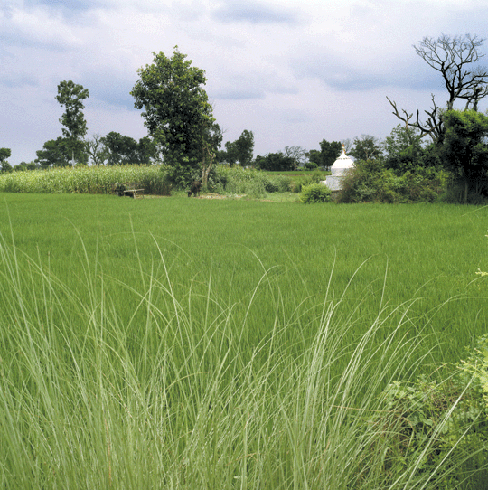
© Max Kandhola, Flatlands
In his first book in the trilogy, Illustration of Life (Dewi Lewis Publishing & Light Work New York 2003), Kandhola photographed his father in the final stages of terminal illness. His intensely personal and honest images confront us with the intimate and often painful reality of death.
The last book in the series Roti Kapra ate Makhan (Food Cloths and Shelter) is a work in progress, and explores contemporary Sikh life in England, through a collection of vernacular photography documenting Kandhola’s extended family, (portraiture) history and archive.
You can read an interview with Kandhola discussing the work here.
Posted in EASY RIDER, HOMELAND | Comments Off on FLATLAND
While reviewing portfolios at Rhubarb Rhubarb’s Cultivate event in Nottingham last week I came across the work of graduate photographer Sam Hofman. His project Aliens Order, deals with notions of his heritage and family roots, in much the same way as Adam Golfer’s work, which I discussed in this blog post.
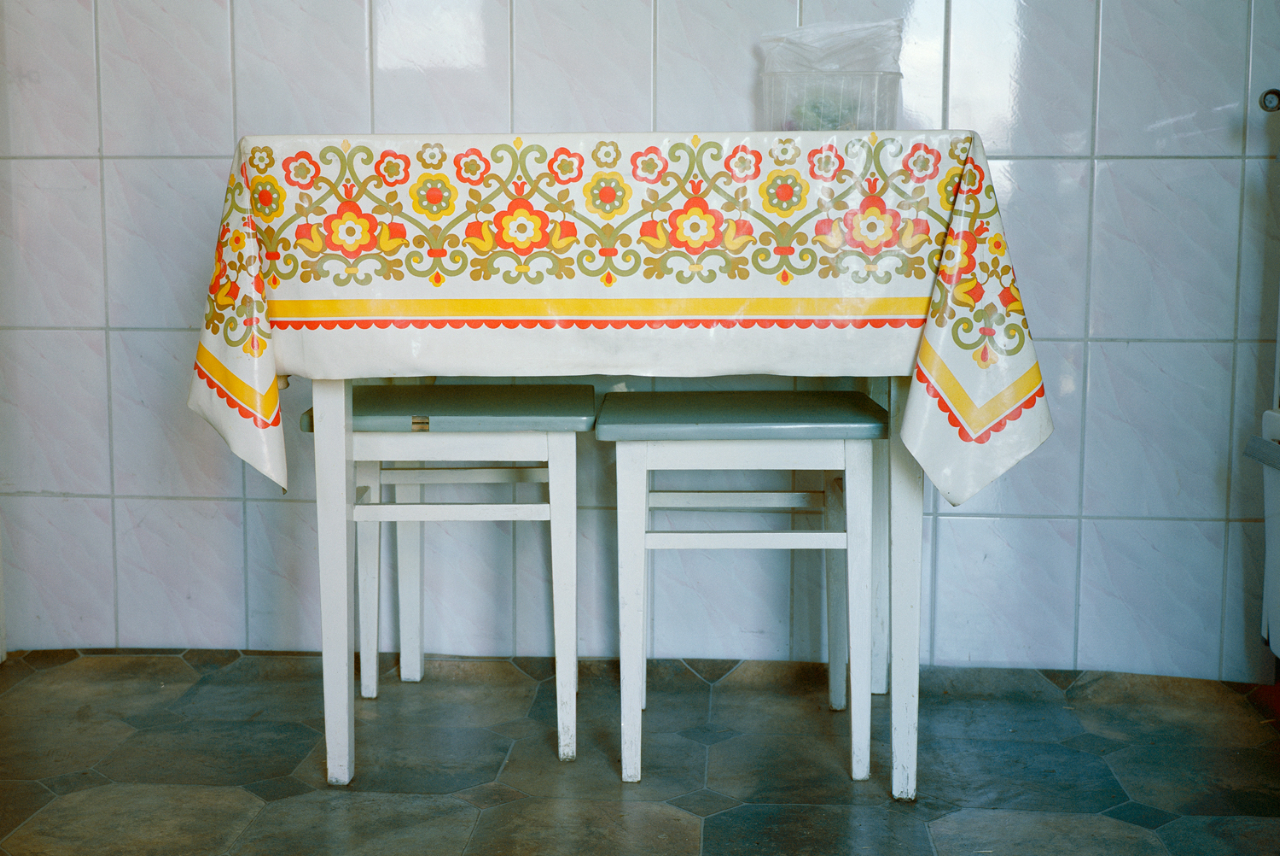
© Sam Hofman, 2008
I asked Sam to explain the ideas behind Aliens Order, and this is what he told me:
“Poland has always been a place of curiosity to me, ever since I was young I was proud to be of Polish blood. My Grandfather Eryk, came to England when he was 20, but not out of choice, he came here by war and could not return to Poland because of communistic regime. Times have changed and people come and go as they please. There is a difference of intent with the new migration to England, a choice. The expansion of the EU meant thousands of Polish could brighten their future in England by working. Their relationship to England is different, to that of Eryk’s. In this project, I have been exploring notions of my Polish heritage, and the Poles’ relationship to England. Poland is a strong Roman Catholic country and their mass migration to England has revived many churches.”
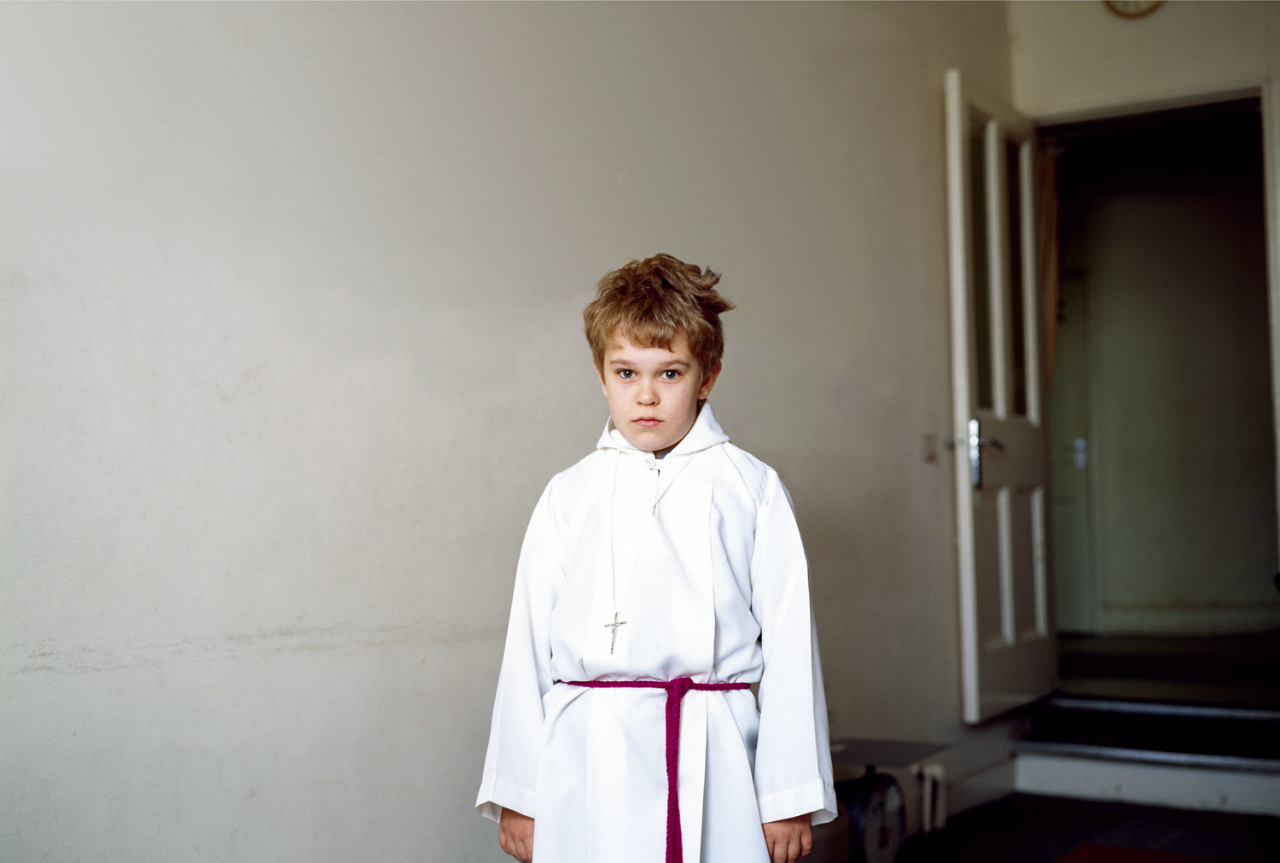
© Sam Hofman, 2008
“By visiting my unmet family in Poland I began to uncover my Grandfathers life back in Poland before he was conscripted not far from my age. By photographing his remaining siblings, the landscape, and the house where he grew up, which was very much untouched. I have used photography as a tool for a deeper understanding of self-reflection, but at the same time discovered the wider context of current Poland, both culturally and politically. As well as their movements in England, I have juxtaposed images taken in Poland as well as in England, to break down the borders of the two countries. I find it interesting the fact that they have left behind their country in search of something more. Other people in Poland I met wanted to stay in Poland and make it work.”

© Sam Hofman, 2008
You can find a larger selection of images from this project on Sam’s website.
Posted in EASY RIDER, HOMELAND | 2 Comments »
























